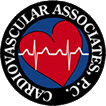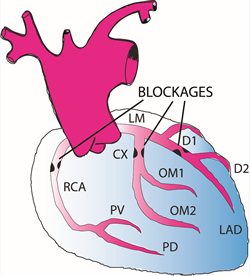ATHEROSCLEROSIS = HARDENING OF THE ARTERIES
Atherosclerosis is the deposition of cholesterol-containing plaque in the arteries of the body. It is more commonly described as hardening of the arteries. It is a systemic disease. Atherosclerosis can involve any of the arteries of the body: arteries to the heart, brain, kidneys, intestines, or legs. The result is a progressive decrease in blood supply to the affected organ. We do not know the cause of atherosclerosis. We do know several risk factors associated with the disease. The most important of these are genetic pre-disposition, tobacco use, hypertension, diabetes and hypercholesterolemia.





